This past August, a group set out to complete the North Coast Trail – a trek around the northern tip of Vancouver Island. A place only accessible by boat, home to the densest population of black bears and cougars on the continent, and known for its knee deep mud, vertical climbs, and ankle tweaking cobblestone beaches. Each of the trekkers lives with type 1 diabetes. We talked with Tandem pumper Geneva Boliek-Poling about her experience.
Q. What was the catalyst that pushed you to apply for Connected in Motion's Adventure Team
I saw a post on their
Instagram feed calling for applications. It sounded crazy and wonderful and beyond my reach, so I tucked it away in my mind as something to daydream about.
A few weeks later, my long-term relationship came to an end and I needed an outlet for all the emotions that come with a breakup. Diabetes had lodged itself so deeply in my identity and it was such a private aspect of my life that I never felt like it
could be a part of my relationship. It sounds selfish, but I wanted to do something that was just mine. Diabetes became my ticket to this incredible adventure.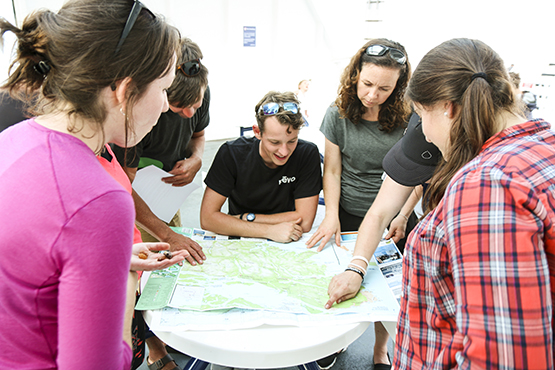
Q. Had you done any diabetes programs before
this?
This was the first. Before the trip I knew only three people with diabetes. I was 17 when I was diagnosed and never had a diabetes camp experience.
My mom and dad have been my main support from day 1 and they are my go-to when I feel overwhelmed. They have a hard role because they’re my parents and they of course worry about me a lot, even more than I worry about myself. So when I decide to go out and do crazy adventures like the NCT, I know they’re thinking of the risk. But even so, they’re supportive and have helped me make my wildest dreams a reality regardless of diabetes.
But, I underfed the community aspect of my diabetes. Until now.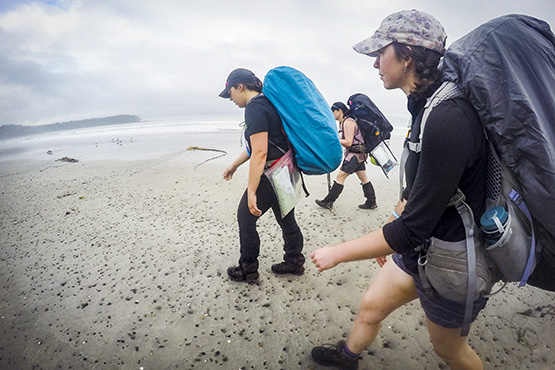
Q. How did you prepare for the trip physically and mentally?
I was worried that I would be discouraged by how difficult training would be, so I didn’t really train for backpacking specifically. I relied on being in shape from my habit
of running every day.
Anytime I have a big event or trip coming up, I go into planning overdrive. I make lists and sub-lists and sub-sub-lists outlining everything I might need because I’m paranoid about forgetting something important like my insulin or underwear. For
this trip I tried to think of all the possible scenarios and variables so my packing list for diabetes supplies was thorough. I had more sensors than I should need and extra infusion sites, etc. I ended up needing them!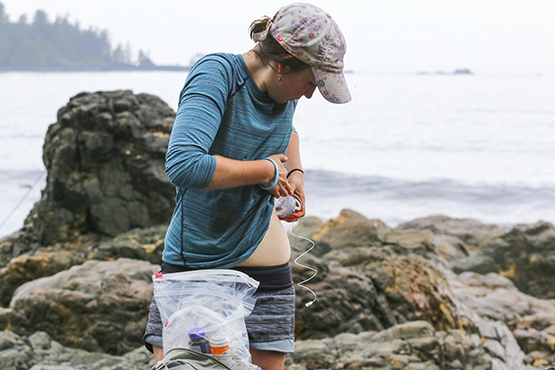
My pump site knocked loose on the trail while I was hauling myself up a slippery climb. Thankfully I had packed enough extra sites to do a quick change right here on the beach. After that, I had to rethink where on my body I would put my new site because the 65 liter pack strapped to me hit all the spots where I usually stick it.
If diabetes has taught me anything, it’s that you can’t predict the future. You can be as prepared as you like, but there will always be some unpredictable occurrence that you haven’t dreamed up in the planning stage. Adapting to the
environment with the gear I had was an important lesson.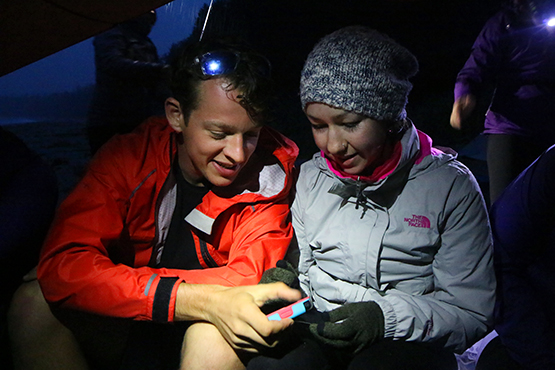
Q. How did you need to adjust your insulin needs for the days on the trail?
The days on the trail I ended up using 10% of my regular basal rate. After the second day, I set a Personal Profile just for the trail. We were burning through carbs like crazy, so if I had stayed on my normal basal rate I would have been hypoglycemic the whole time. It was surreal to need so little insulin for
meals and snacks – for the week of the hike, I felt like I didn’t have diabetes! It was a difficult part of reentry in to my normal lifestyle after the hike when I had to switch back to my previous rate.
I switched to an
insulin pump after
four years of using multiple daily injections because I wanted the ability to have nuanced control over my insulin intake, and this was a good example where the pump features helped.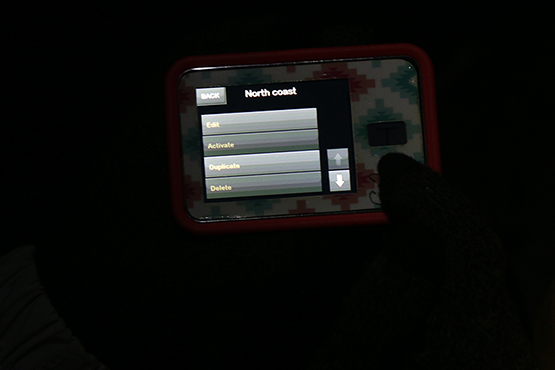
Q. What is the biggest challenge that diabetes brings to your life?
The biggest challenge for me is when I have to stop what I’m doing based on what my blood sugar is doing. The challenge is accepting that sometimes I must defer to my
diabetes because the consequence to ignoring it is unacceptable. My diagnosis made me respect my own existence much more than I had beforehand.
Over the years, diabetes has become such a normalized part of my routine that it’s almost profound how little I think about it sometimes. It’s affected my daily life so much that it becomes my normal.
Diabetes wasn’t even the hardest part of the trail.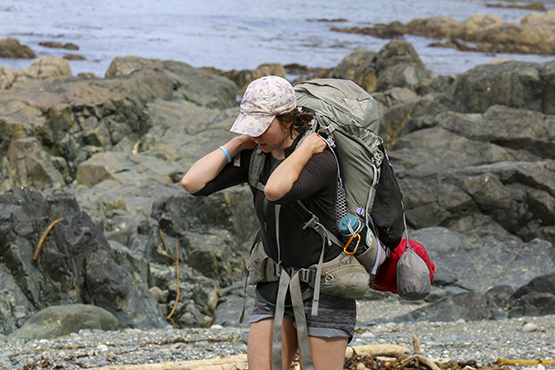
Q. What was the hardest part?
I was in a lot of pain from a knee injury that got worse throughout the trip. On the very last day of our hike, I was in tears for the last few miles from the pain. I think some tears came from the sorrow/joy/satisfaction
of completing the trail. When we reached the parking lot at the very end, I don’t think I had ever felt such a weird combination of relief and emptiness.
Out there I learned we had purpose. The accumulation of all the small things added up: The moments where you’re laughing uncontrollably with the person hiking behind you. Or watching the sunset and everyone is quiet. Or eating dinner all together
while your socks dry by the fire. It was in those little moments that I was struck by the impact of what we were doing.
The trail taught me that diabetes isn’t a roadblock, but a stepping stone. I wouldn’t have hiked the NCT
if I weren’t diabetic. Without diabetes, I wouldn’t have the same appetite for pushing limits.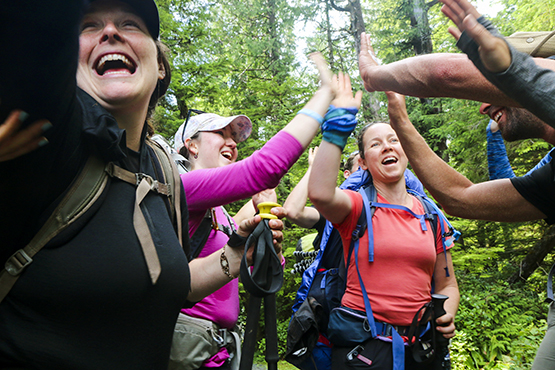
Q. What’s different about life after the trip, than before?
I have WAY more mental endurance. “One step at a time” had a literal meaning on the hike, but it’s translated into difficult days with diabetes management
in a mental sense.
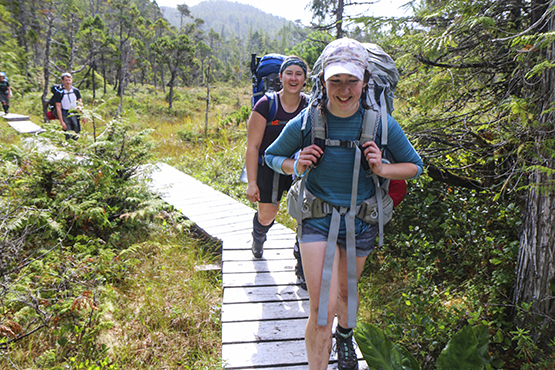
Interview and photos by Blair Ryan.
From time to time, we may pass along: suggestions, tips, or information about other Tandem Insulin Pump user experiences or approaches to the management of diabetes. However, please note individual symptoms, situations, circumstances and results may vary. Please consult your physician or qualified health care provider regarding your condition and appropriate medical treatment. Please read the Important Safety Information linked below before using a Tandem Diabetes Care product.